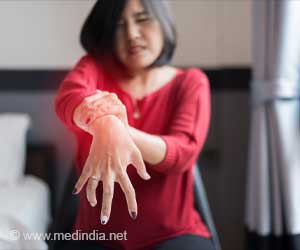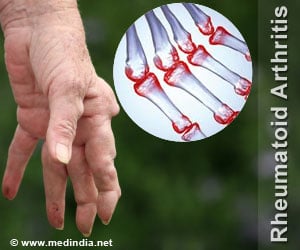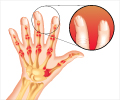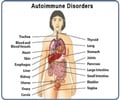The extensive and invisible nature of the rheumatoid arthritis symptoms makes it difficult and often frustrating to diagnose.

‘In addition to physician-prescribed medical treatments, many rheumatoid arthritis patients use alternative therapies and make lifestyle changes to help cope with their unseen symptoms.’





Unlike the more common osteoarthritis, RA is an
autoimmune condition in which the body's immune system mistakenly
attacks healthy tissue. The inflammation from RA also attacks other
parts of the body including organs, bones, and soft tissue, such as
muscle, ligaments, and tendons.Rheumatoid Arthritis In America 2016, a national survey by Health Union of more than 3,100 individuals who identified as having rheumatoid arthritis (RA), reveals that initial symptoms are often invisible to others, with respondents experiencing more than six on average.
Among people with RA who took the survey, receiving a diagnosis often proved difficult with the average time between initial symptoms and diagnosis spanning four years. In addition, people with RA note feeling stigmatized for often not looking sick and the unpredictable nature of the health condition.
Because RA attacks the body internally, many of the symptoms are unseen. 87% of respondents reported painful joints, 68% joint stiffness, and 64% both. In addition, respondents reported other unseen symptoms, such as fatigue (60%) and general stiffness, soreness or aching throughout the body (58%).
The extensive and invisible nature of the symptoms makes RA difficult and often frustrating to diagnose. In addition to the four year average timeframe for diagnosis, 76% of respondents saw at least three doctors and 54% had five or more office visits before receiving a diagnosis.
Advertisement
Even though others cannot see the symptoms, they can have an overwhelmingly negative impact on quality of life for those with RA. 70% report these symptoms affect their overall quality of life. Some of the basics of life are affected, including the ability to exercise or take part in physical activity (77%), ability to perform family and/or household duties (71%), sleep (68%), and ability to work (62%).
Advertisement
In spite of these difficulties, RA patients are resilient. In addition to physician-prescribed medical treatments, many respondents use alternative therapies and made lifestyle changes to help cope with their unseen symptoms. 95% use at least one complementary therapy, such as vitamins, exercise, or heat therapy. Eighty percent changed eating habits or utilized a special diet.
"There's no denying that RA presents some significant challenges when it comes to following my dreams and living the life I want, so I think the most significant lifestyle change I have made has been a mental one," says RheumatoidArthritis.net patient advocate Mariah Zebrowski Leach. "I have accepted the realities of RA as a part of my life, but I haven't allowed RA to be the determining factor when it comes to achieving my goals. I like to say: I have RA - it doesn't have me!"
"The fact that so many RA patients struggle with misunderstood invisible symptoms illustrates the need for a site like RheumatoidArthritis.net. It is a place people with RA can come together for support," said Tim Armand, President and co-founder of Health Union. "In addition, it serves as a critical resource for the RA community to learn from each other and find the latest treatment information."
Source-Eurekalert















